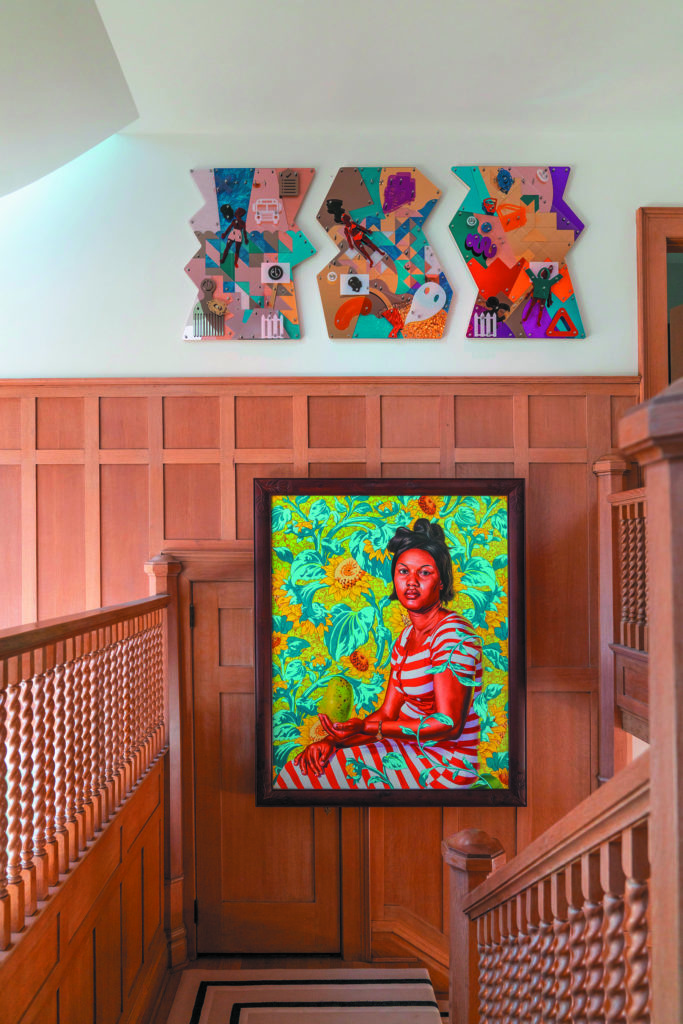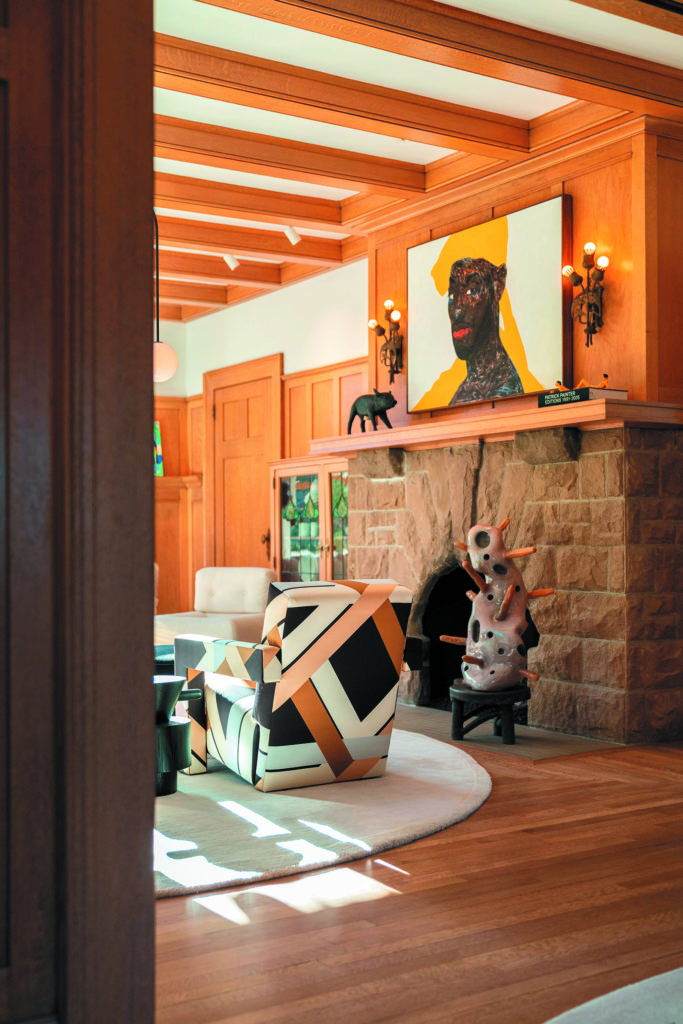Patron of Change
Author:Lindsey ShookChet Callahan, founder of Chet Architecture, has made an immediate impression in the design world for his unique perspective and exuberant projects that promote connection, integrity and vitality through architecture. However, few may know about his appetite for art and, more importantly, of his commitment to collecting works from BIPOC artists in an effort to level the playing field and demonstrate diversity in his own home. Here, he shares why representation through collecting art matters.

Photo by Minh T.
–When did you start collecting work from BIPOC artists? The first piece of art that I ever purchased was an untitled piece by Salomon Huerta depicting the back of a head. It was a gift for my later husband, Jacinto, and was intended to be a playful representation of the back of his own head. As a white, cisgendered man, I acknowledge the privilege that I have enjoyed in my lifetime. I have a diverse family, and I feel compelled to honor their personal histories and backgrounds in the artwork in our home. I believe it enriches all of our lives, but especially my own.
-When selecting art, people often fret over the future value of an artist’s work. Is that something you consider?
When I began collecting art, a wise client once advised: “Don’t buy art to make money but buy art that you know is worth something.” He suggested that I may not always love the piece that I fancy today, and it is important to know that I will be able to sell the work if I ever have a change of heart. True to that advice, my husband and I buy from trusted galleries and celebrated artists, but our main concern is that we find each piece thrilling and that it will inspire us each day as we see it, not how it will appreciate in value tomorrow.
-As a respected collector, why do you feel it’s important for the future of our society to collect work from BIPOC artists? Everybody has their own aesthetic and their own reason for collecting art. But even within these considerations, if one chooses to collect art from only one group of people, they are only seeing one side of a movement or of a story or of a time.

–Why is it crucial to your family to have people of color and artists who created the work represented in your own home? A consistent vein in our collection is representation. It began as a reflection of me and my husband and our interests, then it extended to our children and their interests. In the art that surrounds us, Jacinto and I set an intention for our children to see subjects with skin tones similar to their own, who could possibly be genetically related to them, and who might have a similar experience of the world as they do and will. In a way, we have constructed a family tree for us all, through the subjects in the art in our home.
–The art world is noticeably working harder to shed light and create more opportunity for artists of color. Do you feel the architecture and design industry should do more and if so, how? Diversity is important. The architecture and design professions need to take the time to understand and invest in design dialogues that are outside of the mainstream conversations.
–What three BIPOC artists are on your radar right now? Devan Shimoyama’s hyper-colorful, mythological environments; Woody De Othello’s familiar yet intriguing glossy household objects; and Elliott Jerome Brown Jr.’s luscious scenes inspire my work daily.








